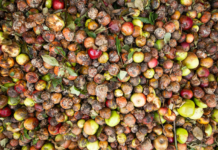Lactoferrin is an important functional ingredient for supporting health and nutrition worldwide. With technology from Gea, industry can extract and turn several milk fractions into high-value products that boost the nutritional value of many different foods and supplements. Gea designs plants and process steps that help to maximize powder yield, hygiene, and plant operability. Gea’s expertise covers multiple steps in the process, including the use of CEE high-efficiency cyclones for dust separation. Gea is proud that MILEI GmbH, the German daughter company of the Japanese Morinaga Milk Industry, has selected Gea spray dryer solutions for their newly extended production plant in Germany.
Morinaga Milk Group, the largest producer of lactoferrin globally and one of the first companies in the world to produce lactoferrin commercially, aims to increase the sale of its own lactoferrin-related products by more than doubling production capacity to approximately 170 tons of lactoferrin per year at its MILEI factory in Leutkirch, in Southern Germany. From here, MILEI produces lactoferrin, whey protein concentrate, lactose, and other dairy ingredients, primarily for European and Asian markets. Many companies, including global food manufacturers, use these ingredients for infant formula or other nutritional products. The new lactoferrin production line is planned to be operational in spring 2021.
Specialists at the Gea Test Center in Denmark worked with MILEI to configure the key drying steps and provided samples for activity studies, which helped determine the optimum spray drying conditions for producing a lactoferrin powder with the desired characteristics.
Extracting lactoferrin from raw materials
Commercial production of lactoferrin involves the precisely controlled extraction and purification of the protein from raw materials such as skim milk, cheese whey, or “native” whey – whey produced directly from skim milk through membrane filtration. The lactoferrin molecule is heat sensitive, and its functionality is significantly reduced if the protein is denatured; therefore, careful pasteurization of the raw material is essential and is carried out in combination with milk processing using bacteria removal separators (BRS) or microfiltration.
Extraction and purification of lactoferrin from the raw material is then carried out using a combination of ion-exchange chromatography and membrane filtration; the purified and concentrated lactoferrin is then dried into a powder through freeze drying or gentle spray drying.
“Lactoferrin has traditionally been dried using freeze-drying, and when using spray drying, it is especially important to configure a process that will result in a highly reproducible and finely controlled powder particle size distribution” explains Nanna Borne, Gea sales engineer, Dairy Evaporation and Powders. “For example, if the lactoferrin is being produced for use in a powder blend, such as infant milk formula, it is important that the lactoferrin component can be easily blended into the milk formula, and that it does not separate out when the consumer product is stored and transported. Gea works with customers around the world to develop and optimize lactoferrin powder process lines for a growing global market.”
Industrial developments
Today, milk and dairy-based products represent a key source of nutrition for millions of people worldwide. According to the Food and Agriculture Organization (FAO) of the United Nations, milk provides excellent caloric energy, high-quality protein, and fat. It is an important source of calcium, magnesium, selenium, riboflavin, vitamin B12, and pantothenic acid.
Developments in industrial processing technologies and equipment have made it possible to isolate many different milk components. From the simple extraction of the milk protein casein – easily recognized as the solids that separate out in soured milk or cheese curds – to the extraction of lactose, the primary sugar in milk, scientists and engineers have generated effective ways of isolating key nutritional components from the milk of cows, goats, sheep, buffalo, and other species.
Today, milk whey protein is processed into high-value whey protein hydrolysates, concentrates, isolates, and other formulations, which are used in a wide range of nutritional powders, drinks, and snacks. Innovative companies and scientific organizations are developing new ways to exploit different bioactive whey components, including lactoferrin.
First discovered in 1939, lactoferrin, in its pure form, is easily recognizable by its pink color. A natural iron-binding and milk glycoprotein found in cow and human milk, lactoferrin is present at its highest concentration in human colostrum.
Lactoferrin is a fast-growing market and an increasingly high-value product, with the number of producers having greatly increased in recent years. Particularly in light of more scientific research becoming available which cite lactoferrin’s many potential health benefits. Studies suggest that lactoferrin supports the human immune system and contains antimicrobial, antioxidant, and anti-carcinogenic properties, for example.
IndiFoodBev — authentic, impactful and influential
An English-language food and beverage processing and packaging industry B2B platform in print and web, IndiFoodBev is in its third year of publication. It is said that the Indian food and beverage industries represent approximately US$ 900 billion in revenues which implies more than 20% of the country’s GDP. Eliminating the wastage on the farmside can help to deliver more protein to a higher number of the population apart from generating sizable exports. The savings in soil, seeds, water, fertilizer, energy and ultimately food and nutrition could be the most immense contribution that country is poised to make to the moderation of climate change.
To improve your marketing and grow sales to the food and beverage processing and packaging industry, talk to us. Our research and consulting company IppStar [www.ippstar.org] can assess your potential and addressable markets in light of the competition. We can discuss marketing, communication, and sales strategies for market entry and growth.
Suppliers and service providers with a strategy and budget for targeted marketing can discuss using our hybrid print, web, video, and social media channels to create brand recognition linked to market relevance. Our technical writers are ready to meet you and your customers for content.
The second largest producer of fruit and vegetables in the world is continuously expanding processing capacities and delivery systems with appropriate innovative technologies. We cover product and consumer trends, nutrition, processing, research, equipment and packaging from farm to thali. Get our 2025 media kit and recalibrate your role in this dynamic market. Enhance your visibility and relevance to existing markets and turn potential customers into conversations. Ask for a sample copy of our bi-monthly in print or our weekly IndiFoodBev eZine each Wednesday.
For editorial info@ippgroup.in — for advertisement ads1@ippgroup.in and for subscriptions subscription@ippgroup.in
Naresh Khanna – 10 February 2025
Subscribe Now











